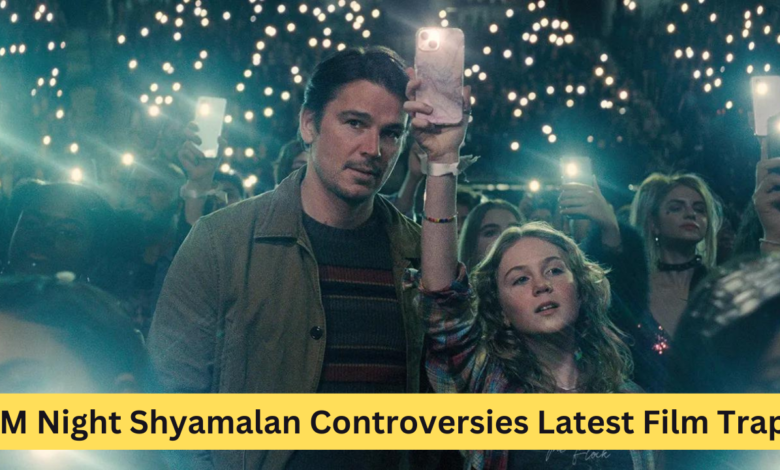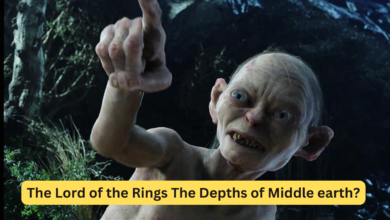M Night Shyamalan Controversies Latest Film Trap

M Night Shyamalan stands as one of Hollywood’s most enigmatic and scrutinized directors. Renowned for his distinctive storytelling style and penchant for unexpected plot twists, Shyamalan’s work has often been a polarizing subject among critics and audiences alike. His latest film, Trap, has ignited a fresh wave of controversy, with detractors expressing vehement disapproval. This article delves into the film’s reception, Shyamalan’s directorial vision, and the broader implications of this cinematic discourse.
The Legacy of M Night Shyamalan
M. Night Shyamalan’s career is marked by a series of highly influential films that have left an indelible mark on the thriller genre. From his breakout hit The Sixth Sense to the unsettling The Village and the critically acclaimed Split, Shyamalan has demonstrated a unique ability to blend suspense with profound psychological themes. His films are often characterized by intricate narratives and dramatic plot twists, which have become his signature style.
Despite his impressive early successes, Shyamalan’s career has faced significant fluctuations. Films like Lady in the Water and The Last Airbender received harsh criticism, which has cast a long shadow over his subsequent projects. This cyclical pattern of critical acclaim and backlash continues to define Shyamalan’s career, culminating in the recent release of Trap.
Overview of Trap and Its Reception
Trap is Shyamalan’s latest venture, a film that promised to deliver his trademark suspenseful storytelling. The plot revolves around a group of individuals who find themselves ensnared in a psychological maze, with the line between reality and illusion becoming increasingly blurred. The film explores themes of perception, identity, and existential dread—core elements that resonate with Shyamalan’s previous works.
However, the reception of Trap has been notably polarized. Critics and audiences have expressed a range of opinions, with some praising the film’s ambitious narrative and Shyamalan’s bold vision, while others have been more critical, citing issues with pacing and coherence. This divide is not unusual for Shyamalan, whose films frequently elicit strong and divergent responses.
Critical Analysis of Trap
Narrative Complexity and Execution
One of the most discussed aspects of Trap is its narrative complexity. Shyamalan is known for his intricate storylines, and Trap is no exception. The film’s plot is designed to keep viewers on edge, with twists and turns that challenge their perceptions. However, this complexity can be a double-edged sword. While some viewers appreciate the intellectual engagement required to decipher the plot, others feel that it leads to a confusing and convoluted narrative that detracts from the overall experience.
Character Development
Character development is another critical area of focus in Trap. Shyamalan’s films often feature deeply flawed characters, and Trap is no different. The film delves into the psychological landscapes of its characters, exploring their motivations and fears. Yet, some critics argue that the character arcs in Trap lack depth and fail to fully engage the audience. This critique highlights the challenge of balancing intricate plotting with meaningful character exploration.
Visual and Aesthetic Choices
Shyamalan’s visual style has always been a significant part of his filmmaking approach. In Trap, his use of cinematography and visual effects aims to create a disorienting and immersive experience. The film’s aesthetic choices, from its eerie settings to its unsettling color palette, contribute to the overall atmosphere. However, opinions on these choices vary. Some viewers find them effective in enhancing the film’s tension, while others believe they border on overwhelming or excessive.
The Broader Impact of Trap on Shyamalan’s Career
The reception of Trap is more than just a commentary on the film itself; it reflects broader trends in Shyamalan’s career. The polarized reactions to Trap underscore a persistent pattern in Shyamalan’s work—where ambitious storytelling is met with mixed responses. This pattern raises questions about the future of Shyamalan’s career and his ability to navigate the complex landscape of modern cinema.
Fan Expectations vs. Critical Reception
One of the central issues surrounding Trap is the discrepancy between fan expectations and critical reception. Shyamalan has built a loyal fan base who eagerly anticipate his films, often with high expectations based on his past successes. When these expectations are not met, it can lead to heightened criticism. Conversely, critics may approach Shyamalan’s films with preconceived notions based on his previous work, influencing their assessments of Trap.
Shyamalan’s Creative Vision
At the heart of the discussion about Trap is Shyamalan’s creative vision. His films are often characterized by a distinctive style and thematic depth, which can be polarizing. Shyamalan’s willingness to take risks and explore unconventional narratives is a testament to his artistic ambition, even if it means facing criticism. Trap reflects this commitment to creative exploration, highlighting the tension between innovation and audience expectations.
Shyamalan’s Influence on Modern Cinema
M. Night Shyamalan’s influence on modern cinema cannot be understated. His pioneering approach to storytelling and his mastery of suspense have set benchmarks for the thriller genre. Trap continues this legacy by pushing the boundaries of narrative structure and psychological depth. Even as Trap faces criticism, it is essential to recognize the broader impact of Shyamalan’s work. His films challenge conventional filmmaking norms and encourage audiences to engage with cinema on a deeper level. The director’s distinctive voice and innovative techniques have inspired a new generation of filmmakers to experiment with narrative form and thematic exploration.
Looking Ahead: The Future of M. Night Shyamalan
As the discourse around Trap continues, it raises intriguing questions about the future of M. Night Shyamalan’s career. The polarized reception of his films is a testament to his willingness to take creative risks and explore new ideas. While some may view Trap as a setback, it also represents an opportunity for Shyamalan to evolve and refine his approach. The film industry is dynamic, and Shyamalan’s ability to adapt and innovate will likely shape his future projects. Fans and critics alike will be watching closely to see how Shyamalan navigates this critical juncture in his career, and whether he can harness the lessons from Trap to create new cinematic experiences that resonate with audiences and critics alike.
Conclusion
M. Night Shyamalan’s latest film, Trap, exemplifies the ongoing debate surrounding his work. As a director known for his ambitious storytelling and signature twists, Shyamalan continues to challenge audiences and critics alike. The varied responses to Trap underscore the complex nature of his filmmaking and the inherent risks of pushing narrative boundaries.
While some may view Trap as a misstep in Shyamalan’s career, others see it as a bold experiment that exemplifies his unique artistic vision. Regardless of individual opinions, Trap adds to the rich tapestry of Shyamalan’s filmography and continues to fuel discussions about his impact on contemporary cinema.
32 Famous Actors Played A Wizard Witch OR Magician





6 Comments